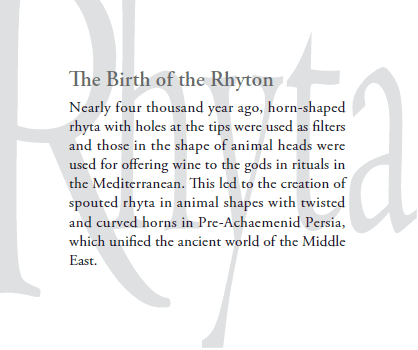
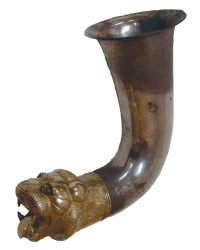

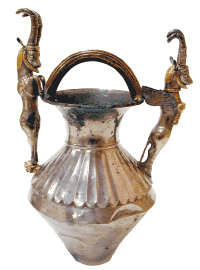
Among the provincial tributes that express the relief carvings on the great palaces of the Persian capital Persepolis are pitchers in the shape of amphoras. No rhyta in the form of animals with bent horns, however, can be found. Such rhyta appear to have spread from Asia Minor and western Iran from around the fifth century B.C.

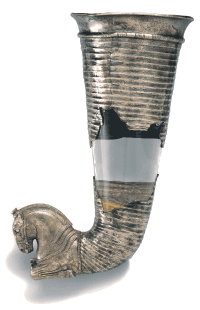
After its unification, Persia not only recognized the autonomy of its territories, it built a capital that brought together the finest artisans and materials from all its regions. The Persian court style, which came about from these resources, represented a kind of universal style. Soon thereafter, the Persian rhyton was born.
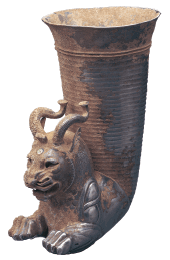


On the wall of an Egyptian tomb, dated to around the fourth century B.C., is an image of what appears to be a metal workshop in relief. A similar work in relief shows the production of rhyta, suggesting that such workshops existed in Egypt during the Persian period.